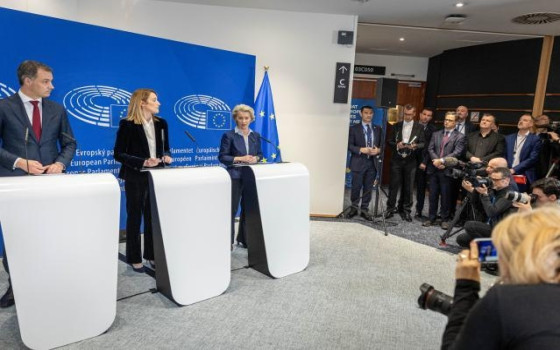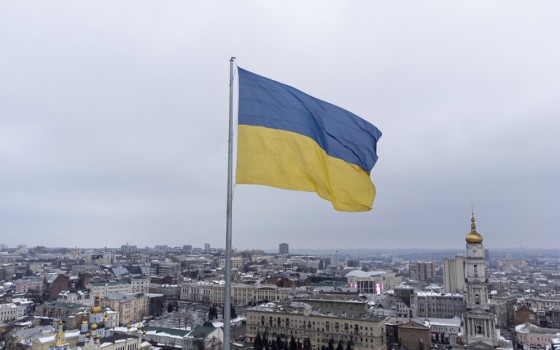
The European Union announces the adoption of the Asylum and Migration Charter. The Brussels Commission describes it as a historic day

- Europe and Arabs
- Thursday , 11 April 2024 11:5 AM GMT
Brussels: Europe and the Arabs
The European Commission in Brussels published the text of President von der Leyen’s speech regarding the adoption of the Asylum and Migration Charter, in a joint press conference with the President of the European Parliament, Roberta Mizzola, and Belgian Prime Minister Alexander De Croo, whose country currently holds the rotating presidency of the European Union. Von der Leyen’s speech stated, “Today is indeed the day.” A historic day. After years of intense work, the Migration and Asylum Pact has become a reality. This is a major achievement for Europe. This excellent achievement builds on the outstanding work done by many. So let me start by thanking Vice-President Schinas and Commissioner Johansson for your wonderful and tireless work. You and your team have worked hard over many years to achieve this day. Dear Roberta, I would also like to thank you and the European Parliament for your dedication and excellent cooperation. This has been truly amazing. I would like to thank the successive Council Presidencies, and I start with you, dear Alexander, the Belgian Presidency, who brought us To the finish line. Thank you very much.
We all understand this basic truth. Migration is a European challenge that must be met with a European solution. One that is effective, fair and firm. This is what the Migration and Asylum Charter achieves. This will make a real difference for all Europeans. First, safer European borders. Know exactly who is crossing our borders, by registering and screening everyone, while ensuring that basic rights are protected through independent monitoring. Secondly, faster and more efficient asylum and return procedures. This means that those without asylum will not be allowed into the EU, while those fleeing war or persecution can rely on the protection they need. The Charter strikes the right balance between stricter rules against abuse of the system and care for the most vulnerable groups. And third, more solidarity with Member States on our external borders. Because they manage the pressure of illegal immigration. So all Member States will be part of this solidarity effort – but they will choose how best to do so. At the same time, secondary movements within the EU cannot be allowed. The new rules provide for closer cooperation between member states to stop secondary movements.
The Charter, at its core, is about how best to pull our weight together. We will do so in a way that respects our commitment, as part of the international community, to support those who have a right to international protection. We have achieved this in the past, and we will continue to do so. But we should be the ones who decide who comes to the EU and under what conditions, not smugglers and human traffickers.
With the Charter, we have the legal framework we need. This is one leg. The second stage is our practical support to member states. We will continue to offer them customized solutions on border management, combating smugglers and returns. We will continue to respond to crises, from Lampedusa to the borders of Finland, from the Canary Islands to Cyprus. In parallel, we will also move forward with our work with global partners, developing partnerships with countries of origin and transit so that we can address the root causes of migration together. This engagement has become a fundamental pillar of our work. And it is delivered.
In conclusion, I am proud to say: We have presented a European solution. But our work is not finished yet. The same determination and unity that have led us to this day must guide us in making the Charter a real success in Europe.












No Comments Found